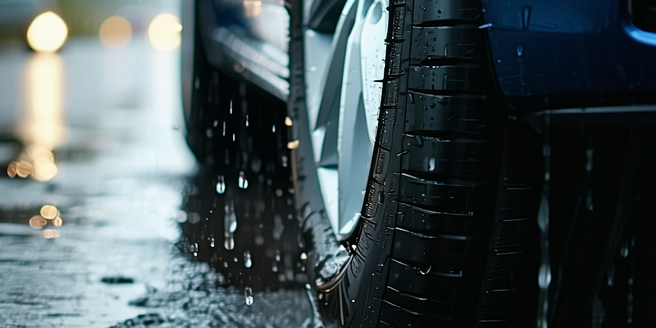
Understanding the Importance of Rain-Safe Tires
Rain-safe tires play a crucial role in ensuring safe driving during wet conditions. The combination of water and slick surfaces can significantly reduce traction, leading to an increased risk of skidding and accidents. Rain-safe tires are specifically designed to channel water away from the tire’s surface, maintaining optimal contact with the road. This is achieved through strategic tread patterns and advanced rubber compounds that enhance grip and stability. Investing in high-quality rain-safe tires is not just a preference but a necessity for any driver who values safety. By understanding their importance, drivers can make informed decisions that prioritize their well-being and that of others on the road. Whether you’re a daily commuter or an occasional driver, ensuring your vehicle is equipped with rain-safe tires can make all the difference during inclement weather conditions.
Key Features to Look for in Rain-Safe Tires
When searching for rain-safe tires, several key features should be considered to ensure maximum performance and safety. One of the primary features is the tread pattern, which should be designed to effectively evacuate water and reduce hydroplaning. Additionally, the tire’s rubber compound plays a significant part; a softer compound enhances grip on wet surfaces. Look for tires with multiple sipes or grooves that provide additional biting edges, improving traction. Another factor to consider is the tire’s overall durability and how well it maintains its performance over time. By prioritizing these features, you can select rain-safe tires that not only offer protection during rainy conditions but also contribute to a comfortable and confident driving experience year-round. Investing time in understanding these aspects is crucial for any safety-conscious driver.
Comparing Different Brands and Models
When comparing different brands and models of rain-safe tires, it is essential to consider various factors that impact performance. Start by researching the reputation of tire manufacturers known for producing high-quality rain-safe options. Reviews and ratings from other drivers can provide valuable insights into real-world performance. Compare the tread designs and rubber compounds used, as these influence the tire’s grip and longevity. Additionally, consider the warranty and support offered by the manufacturer, which can be an indicator of the tire’s reliability and durability. Price can also be a factor; however, it’s important to balance cost with the level of safety and assurance provided. By conducting thorough comparisons, you can make an informed decision that best suits your driving needs and conditions, ensuring maximum safety and efficiency.
The Role of Tread Patterns and Rubber Compounds
Tread patterns and rubber compounds are integral to the effectiveness of rain-safe tires. The design of the tread pattern directly influences the tire’s ability to displace water and maintain road contact. Treads with deeper grooves and sipes enhance water clearance, reducing the risk of hydroplaning. Meanwhile, rubber compounds are formulated to provide the necessary flexibility and grip on wet surfaces. Softer compounds improve traction by allowing the tire to adapt better to road irregularities. The combination of these elements determines the tire’s overall performance, especially under challenging weather conditions. Understanding the role of tread patterns and rubber compounds helps consumers make informed choices, ultimately leading to better driving experiences during rainy weather. Selecting the right tire is a vital step in enhancing vehicle safety and optimizing performance on wet roads.
Tips for Maintaining Rain-Safe Tire Performance
Regular maintenance is crucial to extend the lifespan and performance of rain-safe tires. Start by frequently checking the tire pressure, as both overinflation and underinflation can affect grip on wet surfaces. Rotating tires every 5,000 to 8,000 miles ensures even wear, maintaining optimal performance. Inspect tread depth regularly; a depth of at least 3/32 inches is recommended for safe driving in wet conditions. Additionally, keep an eye out for any visible signs of damage or uneven wear that might compromise the tire’s integrity. Alignments and balancing checks should be part of routine maintenance to prevent irregular wear patterns. By adhering to these maintenance tips, you enhance the safety and longevity of your rain-safe tires, ensuring that they perform effectively throughout their lifespan. Proper care not only boosts safety but can also lead to cost savings in the long run.
